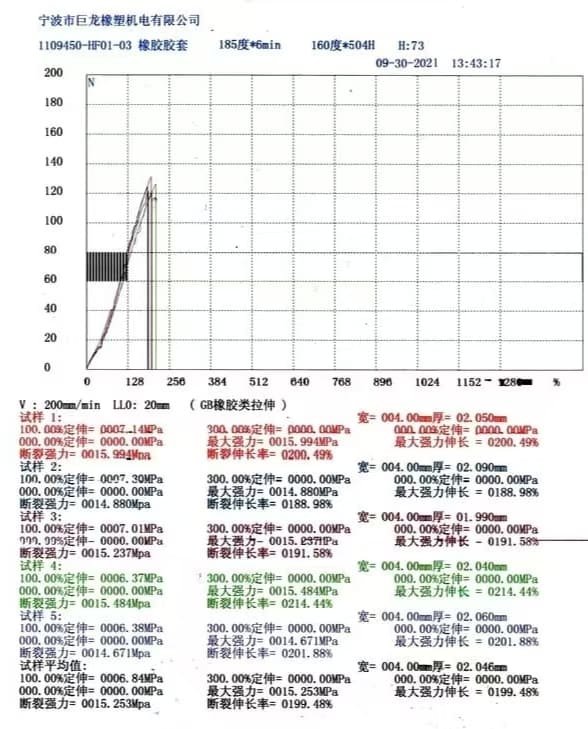Experiencing issues with rubber components failing under stress or lacking necessary flexibility? Understanding tensile strength is crucial to addressing these problems.
Rubber tensile strength significantly influences a material's durability, flexibility, and resistance to wear. High tensile strength ensures better performance in demanding conditions, while lower tensile strength materials offer greater flexibility for specific applications.

Let's explore how varying tensile strength ranges affect rubber performance and how to select the appropriate material for your needs.
What Is Tensile Strength1 in Rubber?
Uncertain about what tensile strength means concerning rubber materials?
Tensile strength refers to the maximum stress a rubber material can endure while being stretched before it breaks. It's a critical indicator of the material's ability to resist tensile (pulling or stretching) forces without failing.
Understanding this property is essential for selecting the right rubber for various applications, ensuring both performance and safety.
How Does Tensile Strength Affect Rubber Performance?
Not sure how tensile strength impacts the functionality of rubber products?
The tensile strength of rubber significantly influences its durability, flexibility, and resistance to wear and tear. High tensile strength materials are more durable and suitable for demanding applications, while lower tensile strength materials offer greater flexibility.
Let's delve deeper into these aspects:
Durability and Wear Resistance2
High tensile strength enhances a rubber's ability to withstand mechanical stresses without tearing or deforming, making it ideal for applications requiring longevity and reliability.
Example: In automotive seals, high tensile strength rubber ensures prolonged performance under constant pressure and varying temperatures.
Flexibility and Elasticity
Rubbers with lower tensile strength are generally more flexible, allowing for greater elongation before breaking. This property is beneficial in applications where the material needs to stretch and return to its original shape.
Example: Rubber bands require lower tensile strength to maintain their elasticity and functionality.
What Factors Influence Rubber Tensile Strength?
Wondering why some rubber materials are stronger than others?
Several factors affect the tensile strength of rubber, including the type of rubber, fillers used, curing processes, and environmental conditions.
Let's break these down:
Type of Rubber
Different rubber materials inherently possess varying tensile strengths. For instance:
- Natural Rubber: Known for high tensile strength and excellent resilience.
- Nitrile Rubber (NBR): Offers good tensile strength along with oil and fuel resistance.
- EPDM Rubber: Provides moderate tensile strength with excellent weather resistance.
Fillers and Additives
Incorporating fillers like carbon black can significantly enhance the tensile strength of rubber by reinforcing the polymer matrix.
Example: Tire manufacturing often uses carbon black to improve durability and performance.
Curing and Vulcanization
The process of curing or vulcanization establishes cross-links between polymer chains, enhancing tensile strength. The degree of cross-linking must be optimized; excessive cross-linking can lead to brittleness, while insufficient cross-linking may result in inadequate strength.
Environmental Factors
Exposure to extreme temperatures, UV radiation, and chemicals can degrade rubber, affecting its tensile strength over time. Selecting rubber formulations resistant to specific environmental conditions is crucial for maintaining performance.
How to Choose the Right Tensile Strength for Your Application?
Unsure which tensile strength is suitable for your specific application?
Selecting the appropriate tensile strength involves assessing the operational demands, environmental conditions, and specific requirements of the application.
Consider the following steps:
Assess Operational Demands
Determine the mechanical stresses the rubber component will face, including stretching, compressing, or twisting forces. High-stress applications typically require rubber with higher tensile strength.
Example: Industrial conveyor belts subjected to heavy loads benefit from high tensile strength rubber to prevent premature failure.
Evaluate Environmental Conditions
Consider factors like temperature extremes, exposure to oils, chemicals, or UV light, and select rubber materials formulated to withstand these conditions without significant loss of tensile strength.
Example: EPDM rubber is suitable for outdoor applications due to its excellent weather resistance.
Balance Flexibility and Strength
Some applications require a trade-off between tensile strength and flexibility. Understanding this balance is essential to ensure optimal performance.
Example: Rubber seals in dynamic applications may need moderate tensile strength to maintain flexibility and ensure a proper seal.
Conclusion
Understanding and selecting the appropriate tensile strength for rubber materials is vital for ensuring durability, flexibility, and overall performance in various applications.






